How and how to feed the pepper during flowering?

Pepper is not a very capricious crop, relatively unpretentious to care for, but in need of watering and weeding. And it also needs to be fed so that the harvest is plentiful, pleasing with taste and appearance.
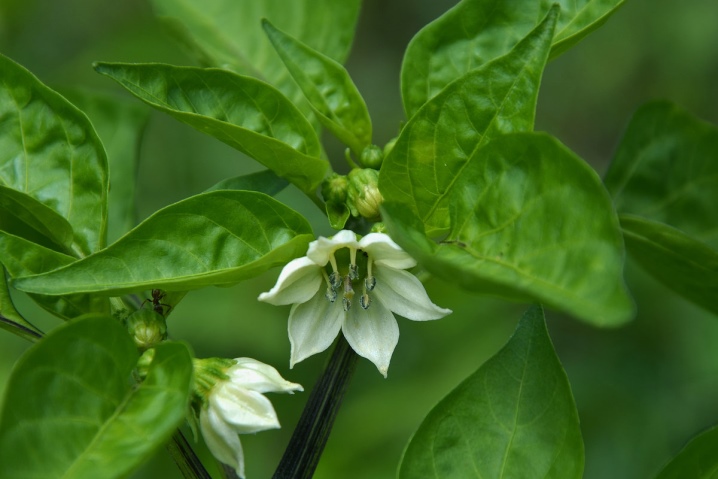
What fertilizers are used?
If the growth of a bush or seedling has slowed down, the sprout becomes lethargic and weak, which means that the pepper does not receive enough nutrition. If the stem develops unevenly, the growth can be called weak, or it began to turn yellow - this also indicates a lack of nutrients in the soil. The dull vegetative part of the pepper, a noticeable increase in purple color on the vegetable, the dropping of ovaries and leaves are also reasons for feeding the plant.
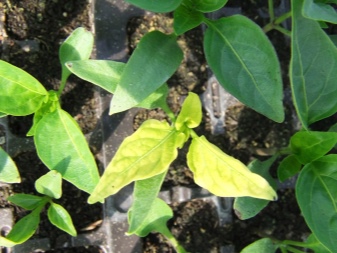

Mineral
Mineral complexes help to feed crops at different stages of growth. These preparations are so convenient that their composition is selected taking into account the needs of the plant and contains not just useful elements, but their correct proportions. You don't have to measure and weigh anything yourself. The grower simply dilutes the product with water - and waters the crop.
Features of use:
-
after blossoming of flowers, "BioMaster" is actively used, stimulating the formation of ovaries;
-
when the first fruits appear, "Agricola-Vegeta" is used, which increases the number of fruits and has a beneficial effect on their taste;
-
nitroammophoska is also good during the ripening period of the first fruits;
-
during active growth of green, as well as root mass, it is recommended to feed the pepper with urea, adding phosphorus compounds;
-
the next mineral dressing is possible during the flowering period - urea, superphosphate, potassium nitrate are used;
-
at the stage of fruit formation, potassium and phosphorus are used, but one should refrain from nitrogen compounds.
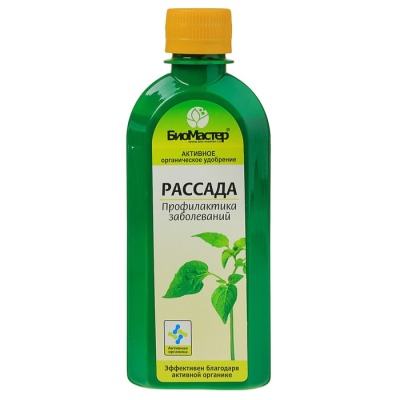
How often to apply mineral fertilizers depends on the condition of the soil. Fertile soil will require no more than 2-3 additional dressings, if the soil is depleted in nutrients, there will be 4 or even 5 procedures.
Of the well-known names of this type of fertilizer, one should also recall "Orton Micro-Fe" and "GUMI". Ideal will act as a good growth stimulator; Kemira Hydro is considered a universal fertilizer. Nitroammofosku, which is also used very actively in relation to pepper, is sold in granules.
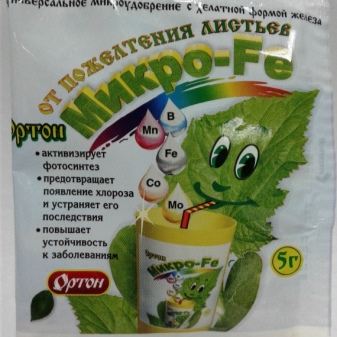
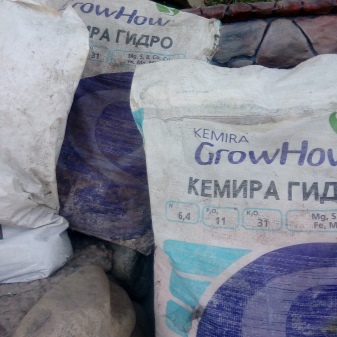
It must be added strictly according to the instructions: in the case of "self-activity", nitrates will accumulate in the soil, which is very harmful.
Organic
Some gardeners not only prefer organic, but consciously and categorically refuse any synthetic mineral products. Especially when it comes to growing a natural farm product, which costs a lot and must be of impeccable quality. Well, organics can really help grow a good crop of peppers.
-
Mullein. Cow dung is often used as an effective fertilizer for vegetable crops. It is used early in the development of plants to stimulate growth and increase green mass. Mullein is a nitrogen supplement, an alternative to which can be bird droppings (chicken, for example).
-
Wood ash. A great example of organic fertilizer is the combustion product, ash. It saturates the soil with potassium, phosphorus, and also deoxidizes the soil. First, it is brought in when planting pepper: a little ash is added to each hole. The second feeding is planned at the stage of flowering and fruiting.
-
Food waste / residues. For example, a banana peel is used. There is a lot of potassium in it, so it is valuable in the garden.It is better to grind dried skins into powder. And this composition is sent to the holes in the process of planting seedlings. You can also prepare a nutritious liquid based on the peel, like this: 3 peels are poured into 3 liters of water, insisted in a sealed container for 3 days.
-
Eggshell. It can be attributed to the previous point. It contains calcium, moreover, highly concentrated. A liquid is also infused on the crushed shell, which is then used for root watering of the bushes.
-
Bread. Bread dressing is useful at the stage of ovary formation. It significantly enhances the immunity of peppers. And also a solution is used with bread crusts soaked in water, which is then filtered and sent under the bushes.
-
Iodine with milk. Dairy products in combination with iodine are an excellent stimulation of growth, an increase in the number of fruits, an improvement in the taste of pepper, as well as an increase in its immunity.
-
Nettle infusion. However, instead of nettles, you can take any weed. Woodlice, plantain, and dandelion are also used. The plants are crushed, two-thirds filled with them in a container, and filled with hot water to the brim. The container remains in the sun for a week, the composition must ferment. The liquid is subsequently decanted, mixed in equal proportions with clean water, and this solution is used to water the bushes. This watering is repeated every 10 days.
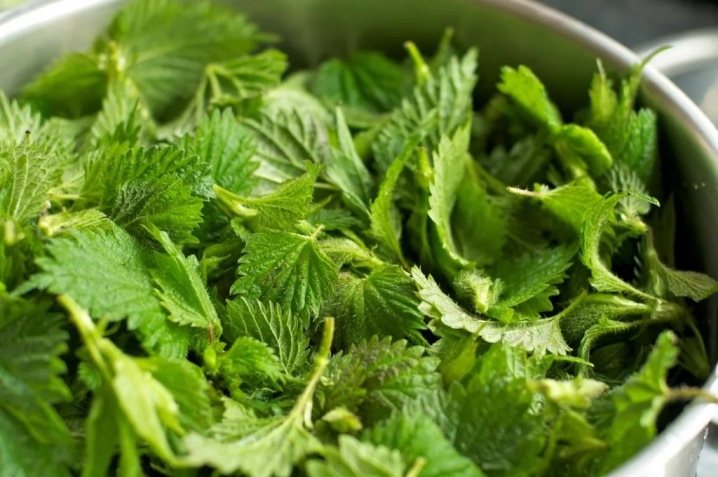
Yeast is also actively used in the cultivation of pepper. They are rich in nitrogen and phosphorus, vitamins and minerals. Such feeding makes sense at the stage of active growth of the culture, it helps to develop the root system of the pepper and its aerial part.
Folk remedies
Most of these recipes are also organic. Some are more popular, some are less. But each of them is effective.
-
Onion peel. In addition to active feeding, this plant component is an excellent disinfectant. You need only 20 g of onion peel for 4 days to insist in 4 liters of water. The strained composition is watered with pepper bushes.
-
Sugar. Sugar is sprinkled on the surface of the soil around the stem. You can also dilute 2 teaspoons of sugar in one glass of water, pour the pepper bushes with the resulting solution. Or you can even take glucose tablets, which are sold in any pharmacy, dissolve one in a glass of water, and pour this liquid on the pepper. But more often than once a month it is dangerous to carry out such feeding.
-
Potassium permanganate. It has long become not a chemical, but a folk remedy for fertilizing plants in the garden. If you mix 2 g of potassium permanganate with 10 liters of water, both peppers and tomatoes can be fertilized with this liquid (plants often coexist on the site). Potassium permanganate, in addition to feeding, also scares off pests, fights against insidious brown spot, and it is spotting that often leads to inhibited fruit growth.
-
Coffee grounds. An excellent fertilizer that is used after picking pepper seedlings. It perfectly loosens the soil, helps oxygen to penetrate more actively to the roots of the plant.
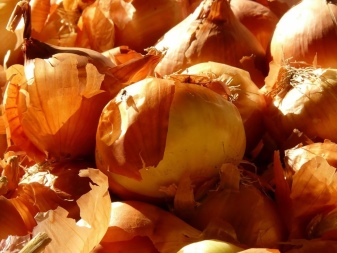
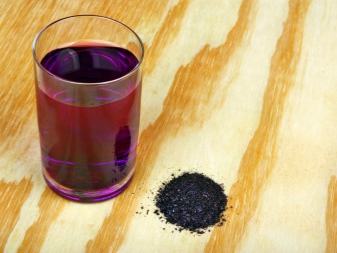
In order not to get confused in the amount of dressings, the gardener should keep a diary. And paint literally by day what is produced today, which plants received top dressing, in what it was expressed. You can also note the reaction of the plant to this or that type of feeding.
If you keep records, underfeeding and overfeeding the culture will not work. In addition, everything will be scheduled in phases, stages, which means that feeding will be orderly and structured.
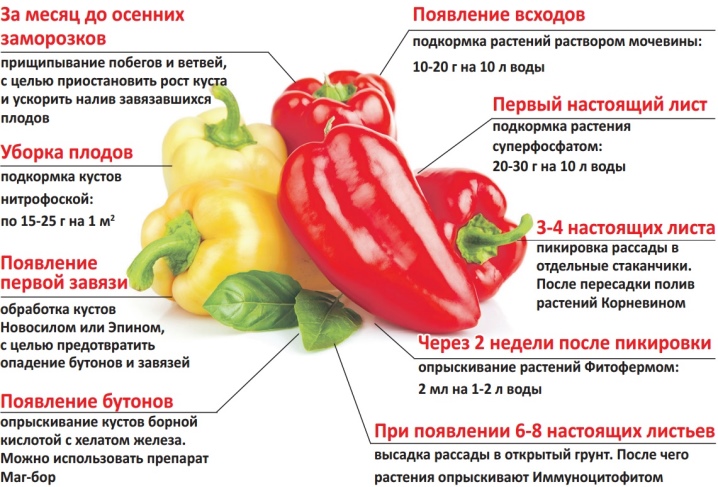
Features of the introduction
There are a few general rules regarding pepper feeding. This culture, for example, does not tolerate fresh manure very well. But he reacts only positively to the fertilizer left over from last year. Any solution used for watering should be slightly warmer than room temperature. Top dressing must be done carefully so that the composition does not get on the fruits and leaves. The optimal time for top dressing is early in the morning or after sunset.
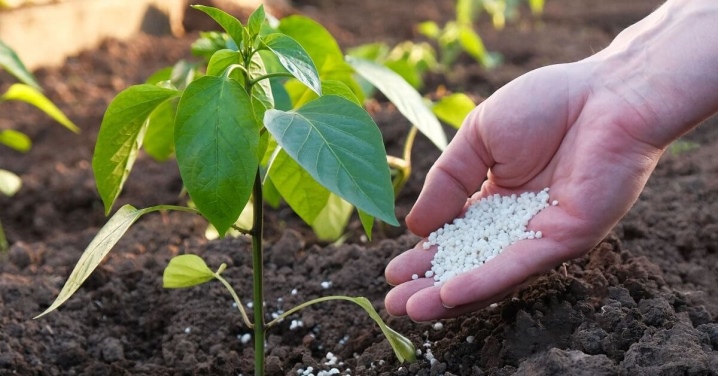
Useful tips for applying top dressing:
-
after planting in a permanent place, the plant most of all needs nitrogen, when it blooms - in the pine forest, after flowering and fruiting - in potassium and a small amount of calcium;
-
pepper does not like sour soil, and therefore the soil can be deacidified - chalk top dressing will help this;
-
peppers are fed no more than 1 time in 10 days, but also at least 1 time per month;
-
organic matter before planting must be strictly dosed, nevertheless, at this moment there are still many useful substances in the soil from the last season;
-
if there is enough nitrogen in the soil, this will have a good effect on the future size of the fruit, on the formation of the number of ovaries, but if there is a lot of it, sweet pepper loses its immunity;
-
phosphorus helps to ripen the pepper on time (including in the open field), it is also responsible for the strength and strength of the root system;
-
Bulgarian pepper will react to a lack of magnesium in the soil with yellow, twisted leaves;
-
peppers are sprayed only in dry, calm weather;
-
before adding any nutrient, the pepper must be watered to avoid burning it;
-
if the summer is rainy and cold, the soil needs potash feeding, which can be applied in the form of wood ash.
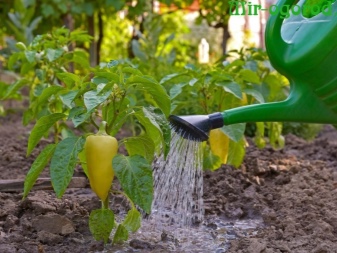
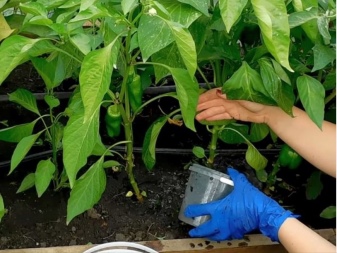
Top dressing can be root and foliar. Foliar means that the plant will be sprayed. It shows its effectiveness during periods critical for the growth of pepper. Root top dressing means that the nutrient is applied specifically at the root.
Recommendations
In order to harvest a rich crop of pepper at the end of the season, you need from the first moments of cultivation, at the very beginning, to understand what the scheme of caring for it looks like.
The principles of growing peppers are described here.
-
Pepper seedlings are always transplanted into neutral soil.
-
The beds need to be reliably protected from the wind, they should be provided with high-quality lighting (choose the best site in the garden).
-
Pepper bushes need regular watering so that, nevertheless, the soil does not become waterlogged. They can be mulched with torn and chopped weeds, straw, sawdust and humus.
-
It is possible and necessary to loosen the beds, but with caution. The root system of the pepper is close to the surface, it can be accidentally damaged.
-
In the flowering phase, you need to feed the culture with calcium nitrate, which will be an excellent prevention of top rot.
-
The priority is for those varieties of pepper that are bred specifically for growing in a particular region (or regions with such weather conditions that are characteristic of your place of residence).
-
When the seedlings are gaining color, the first flowers are removed so that the young plant spends energy not on them, but on strengthening the bush.
-
In order for the nutrients to give strength to flowering and / or fruiting peppers, they must be rotated. Organics with mineral products, for example.
-
All decoctions and tinctures for feeding are best prepared not in metal containers. It's not that metal is definitely a bad thing, but in order to avoid unwanted chemical reactions, it is better to use plastic and other containers.
-
If the bushes are not bad in growth, but the color is insufficient, nitrogen fertilizing should be replaced with superphosphates with water. They do this so that the color does not fall off.
-
Before planting pepper, the main thing is not to overdo it with organic matter.
-
The full dose of phosphorus must be applied in the fall, before plowing the soil. Then phosphorus is introduced during sowing and during the growing season.
-
Lack of phosphorus is the purple leaves of the plant, the rate of phosphorus in the soil is strong roots and an increase in the rate of ripening.
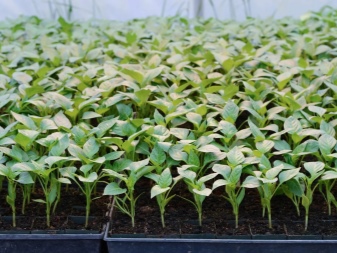
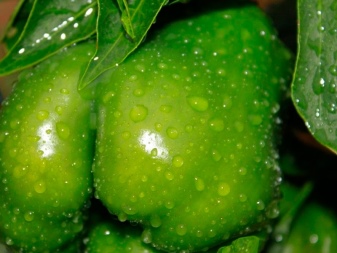
A competent and attentive site owner will first do a soil analysis. A not very expensive procedure will help you find out what is in abundance in the garden, and what the soil is depleted in. This will guide you in the choice of feeding and will not allow you to overfeed the seedlings with this or that substance, or remain without feeding.
How to feed the pepper, see the video below.













The comment was sent successfully.